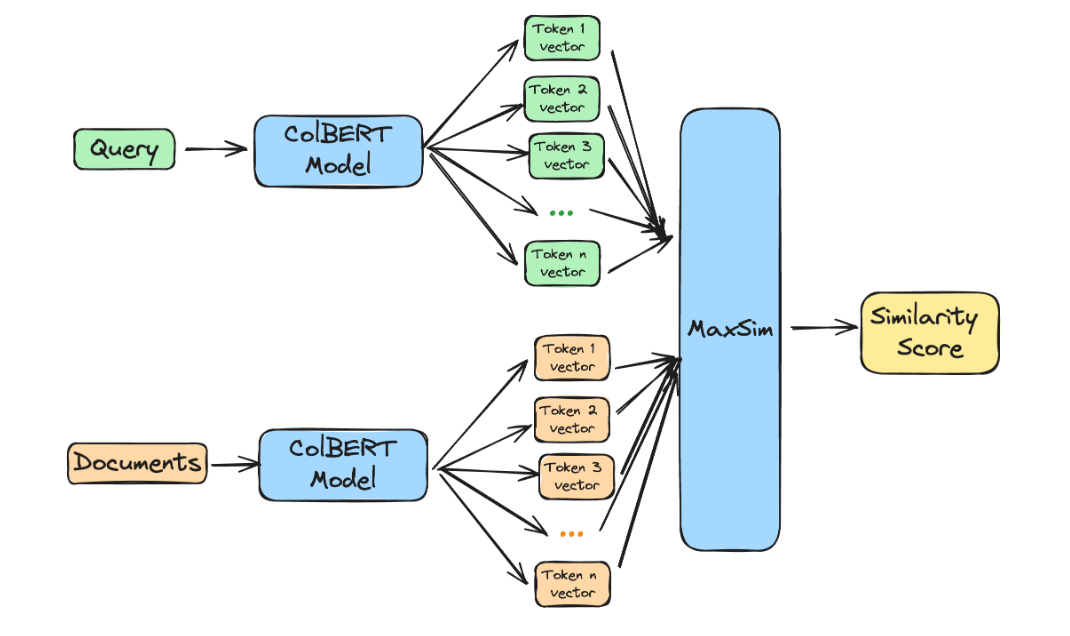
🏹Multi-vector retrieval approaches, like ColBERT, have great retrieval quality but vector count can balloon, AnswerAI propose a solution!
Below is an explanation of how ColBERT works and AnswerAI's proposed modification!
Breakdown of different types of encoders:
Cross-encoders:
- Document text & query text strings concatenated and passed into a cross-encoder which then outputs a rank/score.
Bi-encoders:
- Document text passed into an encoder and generates a document embedding
- Query text separately passed into an encoder and generates a query embedding
- Similarity of query and doc embedding calculated
- Retrieval performance can suffer especially on Out-Of-Domain data
Multi-vector bi-encoder - (eg. ColBERT):
- Functions as a bi-encoder: all documents representations are pre-computed in isolation
- Similarity computation occurs between individual query and document token vectors, as opposed to the full document.
Main weakness of multi-vector approaches:
Storage and memory usage balloons up, each token in a document requires a vector(as opposed to one document = one vector)
Complicated to efficiently search through multiple vectors
AnswerAI's Proposed Token Pooling Solution:
- Main Idea: a lot of the tokens are likely to carry somewhat redundant semantic information, we can semantically cluster them!
- Requires no model modification whatsoever, nor any complex processing, while greatly improving the scalability of easily updatable indexing methods - like HNSW, which are typically harder to use with ColBERT.
Approach:
- Token pooling by clustering similar tokens within a given document and averaging (mean pooling) their representation.
- After being pooled, the vectors are then quantised to 2-bits using the ColBERTv2 quantisation approach
- Each cluster is represented by a single token by averaging the values of contained tokens
Results:
- All results compared to non-pooled ColBERT vector approach
- Pooling by a factor 2 achieves a 50% vector count reduction and 100.6% retrieval performance on average.
- Pool factor = 3 achieves 66% reduction while reaching 99% performance.
- Pool factor = 4 achieves 75% reduction while reaching 97% performance.
Ready to start building?
Check out the Quickstart tutorial, or build amazing apps with a free trial of Weaviate Cloud (WCD).
Don't want to miss another blog post?
Sign up for our bi-weekly newsletter to stay updated!
By submitting, I agree to the Terms of Service and Privacy Policy.
